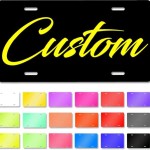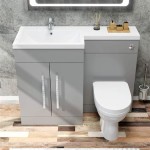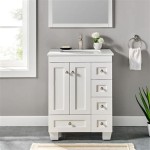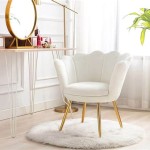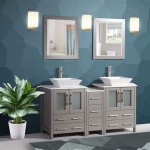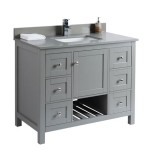Illuminating Your Space: A Comprehensive Guide to 60 Watt Clear Vanity Light Bulbs
Vanity lighting plays a crucial role in creating a functional and aesthetically pleasing bathroom environment. The selection of appropriate light bulbs is paramount to achieving optimal illumination for tasks such as applying makeup, shaving, and general grooming. 60 watt clear vanity light bulbs represent a frequently chosen option due to their balanced light output and aesthetic qualities. This article provides a comprehensive overview of these bulbs, exploring their characteristics, benefits, applications, and considerations for selection.
A clear vanity light bulb, as the name suggests, features a transparent glass envelope. This design allows the filament within to be visible, contributing to a classic and traditional aesthetic. Unlike frosted or coated bulbs, clear bulbs emit a brighter, more direct light. The 60-watt designation indicates the amount of electrical power consumed by the bulb to produce light. This wattage level is often perceived as a sweet spot, providing sufficient brightness without overwhelming the space or consuming excessive energy, although newer LED technologies offer equivalent or even brighter light output with far less wattage.
Understanding the Characteristics of 60 Watt Clear Vanity Light Bulbs
Several key characteristics define 60-watt clear vanity light bulbs, influencing their performance and suitability for various applications. These include light output, color temperature, bulb shape, and lifespan. Each characteristic contributes to the overall lighting experience and should be carefully considered when making a selection.
Light Output: Measured in lumens, light output quantifies the total amount of visible light emitted by the bulb. A traditional 60-watt incandescent bulb typically produces around 800 lumens. This level of brightness is generally considered adequate for vanity lighting, providing sufficient illumination for detailed tasks. However, alternatives like LED or halogen bulbs can achieve similar or greater lumen output with significantly lower wattage requirements.
Color Temperature: Color temperature, measured in Kelvin (K), describes the color appearance of the light emitted by the bulb. Lower Kelvin values (e.g., 2700K) produce a warm, yellowish light, while higher Kelvin values (e.g., 5000K) produce a cool, bluish-white light. For vanity lighting, a color temperature between 2700K and 3000K is often preferred, as it mimics natural daylight and provides accurate color rendering, which is essential for makeup application. Clear bulbs, being traditional incandescent or halogen types, tend to lean towards the warmer end of the spectrum.
Bulb Shape: Vanity light bulbs are available in various shapes, including globe (G), tubular (T), and decorative shapes like flame-tip (CA) or torpedo (B). The choice of bulb shape depends on the design of the vanity fixture and the desired aesthetic. Clear bulbs are commonly found in globe and torpedo shapes, allowing the filament to be prominently displayed and adding a touch of vintage charm. The shape also impacts the light distribution pattern. Globe shapes tend to emit light more evenly in all directions, while elongated shapes might direct the light more intensely along a specific axis.
Lifespan: The lifespan of a light bulb indicates how long it is expected to operate before burning out. Traditional 60-watt incandescent bulbs have a relatively short lifespan, typically around 750 to 1000 hours. Halogen versions offer a slightly longer lifespan, while LED equivalents boast significantly longer lifespans, often exceeding 15,000 hours. Longer lifespans translate to fewer replacements and reduced maintenance costs. This difference in lifespan is a key consideration when evaluating the long-term cost-effectiveness of different bulb types.
Advantages of Using 60 Watt Clear Vanity Light Bulbs
While modern lighting technologies offer new advantages, 60-watt clear vanity light bulbs maintain certain benefits that make them a viable option for some applications. These include their aesthetic appeal, color rendering capabilities (in certain types), and relatively low initial cost.
Aesthetic Appeal: The clear glass envelope and visible filament provide a visually appealing, classic aesthetic. This is particularly desirable for vintage-inspired or traditional bathroom designs. The exposed filament creates a warm and inviting ambiance, adding a touch of character to the space. The simple, unadorned design complements a variety of fixture styles, from minimalist designs to more ornate fixtures. The visual appeal of a clear bulb can significantly contribute to the overall aesthetic of the bathroom.
Color Rendering: Incandescent and halogen clear bulbs are known for their excellent color rendering index (CRI), typically ranging from 95 to 100. CRI measures the ability of a light source to accurately render the colors of objects compared to natural sunlight. High CRI values are crucial for vanity lighting, as they ensure that skin tones and makeup colors appear accurately. This is particularly important for tasks such as applying makeup and shaving, where accurate color perception is essential. While LED technology has improved significantly, some early LED offerings struggled to match the CRI of traditional bulbs.
Initial Cost: Compared to LED alternatives, traditional 60-watt clear incandescent or halogen bulbs typically have a lower initial cost. This can be a significant factor for budget-conscious consumers or for projects involving a large number of fixtures. However, it is important to consider the long-term cost implications, including energy consumption and bulb replacement frequency. The lower initial cost may be offset by higher operating costs over the lifespan of the bulb.
Considerations When Choosing 60 Watt Clear Vanity Light Bulbs
Selecting the right 60-watt clear vanity light bulb involves careful consideration of several factors, including energy efficiency, dimming compatibility, potential for glare, and safety considerations. Addressing these considerations will ensure that the chosen bulb meets the specific needs of the bathroom and provides a comfortable and functional lighting environment.
Energy Efficiency: Traditional 60-watt incandescent bulbs are relatively inefficient, converting only a small percentage of the electrical energy into light, with the remainder being dissipated as heat. This inefficiency results in higher energy bills and contributes to environmental concerns. Halogen bulbs offer slightly improved energy efficiency compared to incandescent bulbs, while LED alternatives are significantly more energy-efficient, consuming up to 80% less energy to produce the same amount of light. When prioritizing energy efficiency, LED bulbs are the preferred choice.
Dimming Compatibility: The ability to dim vanity lights allows for adjusting the light level to suit different tasks and create different moods. Not all light bulbs are dimmable, and even those that are dimmable may require a compatible dimmer switch. Incandescent and halogen bulbs are typically dimmable with most standard dimmer switches, while some LED bulbs may require a specific type of dimmer switch to function correctly. Checking the compatibility of the bulb and dimmer switch is crucial to avoid flickering or other performance issues.
Glare: The clear glass of these bulbs allows for a direct and intense light output, which can potentially cause glare, particularly if the bulbs are positioned at eye level. Glare can be uncomfortable and can impair vision. To minimize glare, consider using a vanity fixture with a diffuser or shade to soften the light. Positioning the bulbs above or below eye level can also help to reduce glare. The design of the fixture plays a crucial role in mitigating potential glare issues.
Safety Considerations: Incandescent and halogen bulbs generate a significant amount of heat, which can pose a burn hazard if touched while in operation or shortly after being turned off. Handling these bulbs with care and allowing them to cool down before replacing them is essential. LED bulbs generate significantly less heat, reducing the risk of burns. Ensuring that the bulb is correctly installed and that the fixture is properly grounded is also crucial for safety. Always consult with a qualified electrician if unsure about any electrical work.
In summary, 60-watt clear vanity light bulbs offer a blend of aesthetic appeal and functional illumination for bathroom environments. Understanding their characteristics, advantages, and potential drawbacks is crucial for making an informed decision. While traditional incandescent and halogen versions provide a classic look and excellent color rendering, LED alternatives offer superior energy efficiency and longer lifespans. The optimal choice depends on individual preferences, budget considerations, and the specific requirements of the bathroom lighting design.

Ge 60w G40 Crystal Clear Globe Standard Light Bulb

Ge Lighting 14187 60 Watt Crystal Clear G40 Vanity Globe Light Bulb 1 Pack

Feit Electric 60 Watt Equivalent St19 Dimmable Straight Filament Clear Glass Vintage Edison Led Light Bulb Soft White 4 Pack

Westinghouse Lighting 03102 60 Watt Clear Vanity Globe Light Bulb Quantity 6

Ecos 60 Watt Equivalent G25 Dimmable Energy Star Clear Glass Filament Vintage Edison Led Light Bulb Bright White 3 Pack Fg 03236 The Home

Reviews For Philips 60 Watt Equivalent G25 E26 Basehalogen Clear Decorative Globe Light Bulb 3 Pack Pg 5 The Home

Sylvania 15871 40g25 3pk Rp G25 Decor Globe Light Bulb

Ge Reveal Hd 60 Watt Eq G25 Color Enhancing Medium Base E 26 Dimmable Led Decorative Light Bulb 2 Pack 42698 At Com

Philips 60 Watt Equivalent G25 E26 Basehalogen Clear Decorative Globe Light Bulb 3 Pack 433680 The Home

Ge Reveal Hd Led Light Bulbs G25 Vanity Globe 2 Pack
